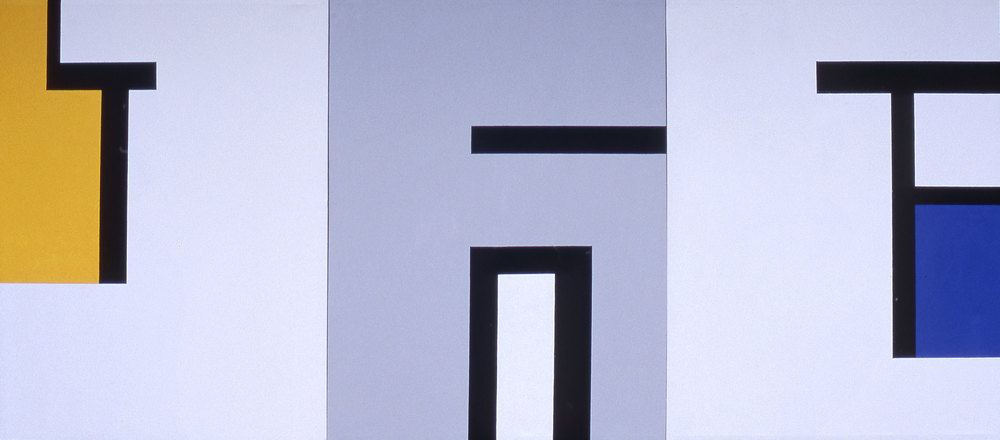“I’ve never paid attention to art trends, though Op Art influenced my early paintings. I found my way of working long ago and I stay with it, working to push my boundaries further and further out. Often I return to ideas to I’ve had as long as twenty years, and because my thinking about art has been consistent, there is a continuity throughout my long years to painting. I am not interested in portraying life as such, but I am interested in portraying ideas and emotions. What I would like most of all to be able to do would be to find in my painting the connection of humanity to the universe - a truly symbolic relationship made visible. This is, I believe, my concept of the spirituality of my painting. I continue with non-objective work using geometric shapes. I believe it is the way that best expresses what I feel and what I think is the deepest, most significant art form now and for the future. I believe that it is not necessarily a good thing to be constantly trying to be new; beauty is what we should be looking for.”
Born in 1913, Mary Henry attended the California College of Arts and Crafts at a time few women were sincerely accepted by the public and the art world as artists. Then, in the late '30s, Henry experienced a life-altering moment whose full effect wouldn't command her life for another 25 years or so: a lecture by the constructivist pioneer and Bauhaus champion Laszlo Moholy-Nagy. Henry was gripped by Bauhaus' formal ideas and Moholy-Nagy's fascination with pure expressiveness through line and color. Those ideas brewed and steeped in Henry's imagination as she lived a life of domesticity: married with children. Henry even left her family for a time to study with Moholy-Nagy in Chicago in the '40s, but it wasn't until 1964, the year she got divorced and became a working artist, that Henry would truly pursue her ambitions. Thus initiated, her journey began to perfect a spare yet expressive visual language out of geometric shapes and bold graphic colors. Henry emerges as a second-generation geometric abstractionist and one of its most supple champions; she located spiritual essences in her work and elicited the highest passion. Through the years, Henry has garnered praise -- and a review in Artforum magazine -- and while she had exhibits in San Francisco and was collected in major Northwest museums, Henry has remained a kind of cult regional figure that the art world is just learning about.


Mary Henry / 1913 - 2009



